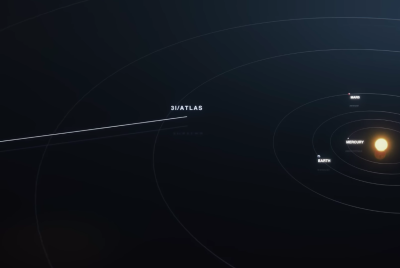Scientists prove decades-old theory suggesting 'extremely odd physics' about black holes
The theory was first proposed by Roger Penrose in 1969.
Almost half a century ago, British physicist Roger Penrose proposed a theory about using black hole to create energy that challenged the laws of physics. Now, after five decades, Scottish scientists have validated the theory.
Scientists at the University of Glasgow's School of Physics and Astronomy used sound waves to validate Roger Penrose's 1969 work. They seemed to have confirmed the theory that was believed to propagate "extremely odd physics."
According to the press release, the theory that suggested "alien civilisation could use a black hole to generate energy" by throwing an object into the black hole's ergosphere was experimentally verified. Penrose projected that the energy could be created by dropping an object then splitting it into two. Out of the parts, one must fall into the black hole while the other one could be retrieved. It was assumed that the second half that is recovered would then acquire energy due to the black hole's rotation. However, Penrose believed that the theory can only be validated by "a very advanced, perhaps alien, civilisation would be equal to the task."
Meanwhile, two years later, another physicist named Yakov Zel'dovich challenged Penrose's claims and suggested the theory has the potential to be proven through an earthbound experiment.
"He proposed that 'twisted' light waves, hitting the surface of a rotating metal cylinder turning at just the right speed, would end up being reflected with additional energy extracted from the cylinder's rotation thanks to a quirk of the rotational Doppler effect," the author said.
However, almost 51 years later, researchers at the Scottish university stimulated the effect that Penrose and Zel'dovich theorised decades ago. The used "twisting sound instead of light" to present a demonstrative effect of theory.
Using microphones, they sent sound waves towards a rotating sound absorber built with a foam disc. As the sound passed through the disc, the speed accelerated up to 30 percent leading to what is known as the rotational Doppler effect.
"The linear version of the doppler effect is familiar to most people as the phenomenon that occurs as the pitch of an ambulance siren appears to rise as it approaches the listener but drops as it heads away. It appears to rise because the sound waves are reaching the listener more frequently as the ambulance nears, then less frequently as it passes," said Marion Cromb, a Ph.D. student in the university and the paper's lead author.
The team discovered a distinctive change in the frequency and amplitude of sound waves passing through the disc. In addition, the findings reveal that as the speed of spinning disc increases, the pitch of the sound coming from the speakers dropped until it was too low to grasp.

"What we heard during our experiment was extraordinary. What's happening is that the frequency of the sound waves is being Doppler-shifted to zero as the spin speed increases. When the sound starts back up again, it's because the waves have been shifted from a positive frequency to a negative frequency. Those negative-frequency waves are capable of taking some of the energy from the spinning foam disc, becoming louder in the process – just as Zel'dovich proposed in 1971," Cromb explained.
The study was published in the journal named "Nature Physics."
© Copyright IBTimes 2025. All rights reserved.





















